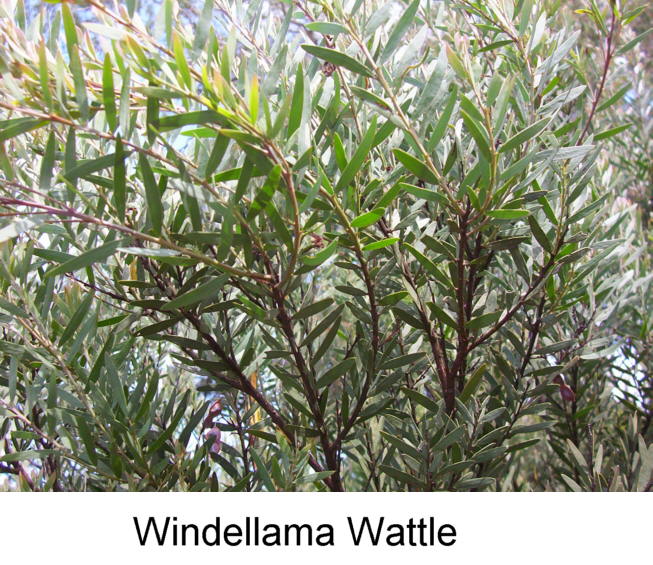
Wild Windellama
by Paul Alessi
February 2006
Blue Devil (Eryngium ovinum)
If you've
seen a low growing, bright blue, spiky looking
plant in your grasslands this summer chances are it is a
Blue Devil, this is a native species with a wide distribution
in Australia, and definitely not a weed.
Although
they look threatening the spines are not very stiff,
it's a pity the photo here is in black and white as they are the
most beautiful blue at this time of the year,
(there is a colour photo on my website)
Blue
Devils are a member of the carrot family and like carrots
also have a tap rootbut I don't know if they are edible....yet !
They are a perrenial and long lived species but the rest of the
year they blend into the background as the blue spiky flowers
and blue branches disappear leaving only the starfish like
green leaves close to the ground. They are quite common,
especially in healthy wallaby and kangaroo grass paddocks in
sunny well drained positions.Blue Devils are one of our most
amazing native plants and are easy to grow from seed.
Windellama Wattle (An Acacia yet to be described)
During
the early days of my learning about our local native plants
I would often submit samples to the Australian National Botanic
Garden's
herbarium at Black Mountain in Canberra for identification
(ANBG),
most turned out to be well known species but on at least two
occasions
the specimens I submitted were of interest to the experts and
they were
keen to see them in the wild and take their own samples for
further study.
One of
these is a dense shrub wattle that grows close to the edge
and higher slopes of the Shoalhaven Gorge, mature plants are
usually
a very attractive rounded shape around 2m to 3m high, 4 m around
and
have the most brilliant yellow flowers.
On
approaching these wattles in the wild for the first time
botanists
from the ANBG dived out of their landcruiser and ran to the
plants
in excitement, Their initial view was that they are a previously
unknown
variety of Acacia fimbriata, this visit by the botanists was
about 10 years ago
and I've yet to hear anymore of it, if it is indeed a new species
then it
could quite rightly be called Windellama Wattle. I grew one from
seed
and it is now about 10 years old, it has thrived in the hard
yellow clay
near our house and is now quite large, the photos were taken from
this
cultivated plant.
I collected some seed recently and hope to grow a few more Windellama Wattles.


Copyright
Paul Alessi 2006